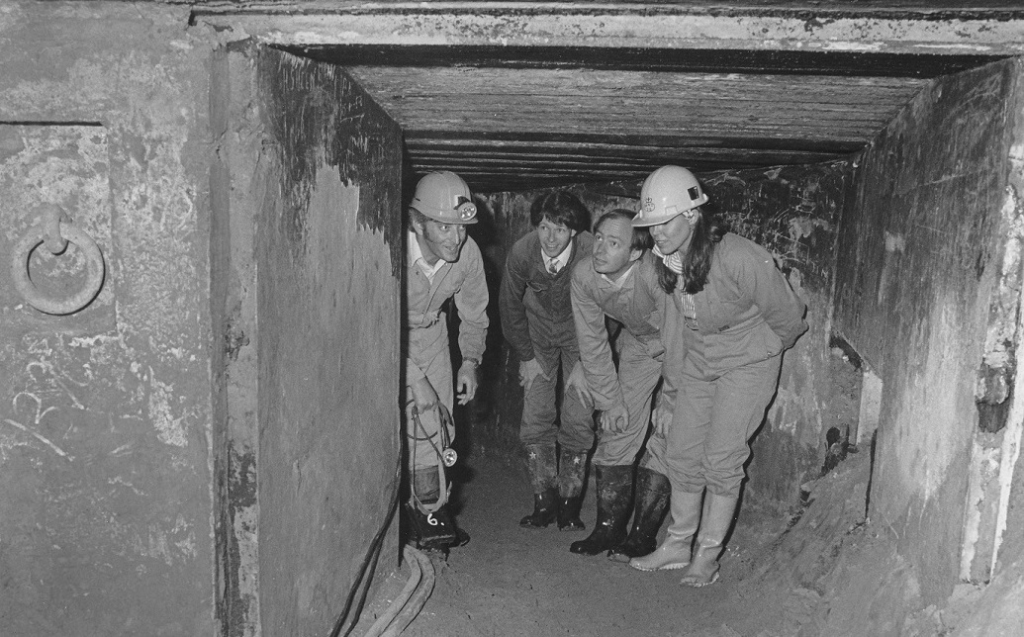
Driving along Military Rd from the corner of Old South Head Rd Vaucluse to the start of Campbell Pde Nth Bondi did you ever ponder the reason why it was so named? After all there are no visible traces of any military facilities or fortifications along that stretch of road. Military Rd would have probably started life as a rough and unnamed pathway sometime after 1811 when the Old South Head Rd was completed. There is a strong likelihood that the pathway followed an ancient and welltravelled bush track created and used by the Gadigal and Birrabirragal clans for generations.

At its inception and for many years going forward a Military Road in this location was of great strategic importance to the defence of Sydney at a time when the burgeoning town was the capital of the British colony of NSW. It’s importance as a Military Road continued beyond Federation in 1901 and up to the end of the Second World War in 1945. In the mid to late 1800s there had been concerns about the defensive vulnerabilities of Sydney. The concerns were centred around the perceived threats to the colony coming from Britain’s European rivals in the Pacific at that time. We were a fledgling colony with a small population, a strategically important harbour and bank vaults that were groaning with bullion from our goldfields. Our defence against invading navies consisted of artillery batteries that were established in a ring inside Sydney Harbour. These fortifications were increased from 1788 up until the 1870s. In 1870 the British military forces left Australia to our own devices and the onus of defence was left to the NSW colonial government.

In 1893 the Ben Buckler or North Bondi Fort was constructed as the first of three locations for the 22-ton, 9.2 inch ‘disappearing’ big guns. The other two were located at Shark Point, Clovelly and Signal Hill, Vaucluse. The forts formed an important part of the new, outer defensive circle of Sydney. The idea being that the heavy guns could counter-attack any invading ships as they approached the entrance to Sydney Harbour. It took three weeks for a team of thirty-six horses to haul the Bondi’s ‘Big Gun’ from Victoria Barracks, Paddington up to the North Bondi Fort. The most arduous part of this journey started at Old South Head Rd where the team travelled along the dedicated Military Road to Macquarie Lighthouse and then beyond to Nth Bondi. At the end of the Military Road the team resorted to zigzagging across sandhills and rough tracks to their destination at the North Bondi fort. The Military Road was recorded as being purpose-built for conveying this immense weapon to its formal home at North Bondi. The military road was later formally named and gazetted as Military Rd. It started life as a well-made and graded roadway and for the greater part of its length the road followed the top of the cliffs through the suburbs of Vaucluse, Dover Heights, and North Bondi. By 1887 residents of Bondi and Waverley were pushing for the extension of Military Rd from its termination near the North Bondi fort all the way to Bondi Rd as was initially intended. In 1899 it was reported that the road was in a dangerous and disgraceful state, neglected it seemed because its sole purpose was for the conveyance of the big gun some 6 years prior. Flooding had undermined the road foundations and land slippage had seen part of the roadway subside into a gully. The roadway was in such an abysmal state that tradesmen visiting the North Bondi fort opted for a rough bush track that they created themselves.

As for the ‘Big Gun’ itself was then positioned inside a 10-metre-thick concrete pit at North Bondi and covered with an iron shield that had an opening for the gun to be fired and recoiled through. The gun could fire 72-kilogram armour-piercing projectiles 8.2 kilometres out to sea. It could be loaded, shunted forward through the opening then fired with the recoil action forcing the gun back down into the pit. That was the beauty of the disappearing ‘Big Gun’. It was designed to fire at any hostile naval vessels and then vanish out of sight of the enemy ships. Bondi’s disappearing ‘Big Gun’ never did get to fire a shot in anger although it was involved in regular joint firing practices with other nearby gun batteries. The large piece of military kit was not without controversies over the years as the reverberation from the gun blasts were often recorded as having smashed windows and caused cracks in the walls of local residences. Residents were advised to leave their windows open during the firing drills and when the red flag was flown all shipping was warned to steer well clear of the impeding shell practice. The Big Gun was kept on standby during the First and Second World Wars until finally at war’s end in 1945 this fascinating relic of late 19th century military technology was silenced forever. In the 1950s the Federal Government handed over the Bondi Fort military land to Waverley Council. The fort with its ‘Big Gun’ and associated munitions rooms was left abandoned when attempts to sell the gun for scrap had failed. Eventually the 22-ton Bondi sentinel was buried under a couple of metres of sand and the area was converted into a public parkland known as Hugh Bamford Reserve. In 1984 Sydney Water excavation works uncovered the iron shield and associated Bondi Fort rooms and the State Heritage Office were called in to conduct an archaeological excavation and survey. The disappearing ‘Big Gun’ was then re-buried and now remains intact as the only complete example of a ‘disappearing’ big gun in Sydney. Footnote. The aerial photo taken some time between 1934 and 1942 shows the location of the North Bondi Fort and the ‘Big Gun’ (red circle) with Military Rd running just below. Photographs attached to this story are subject to copyright restrictions. #bondihistorian
